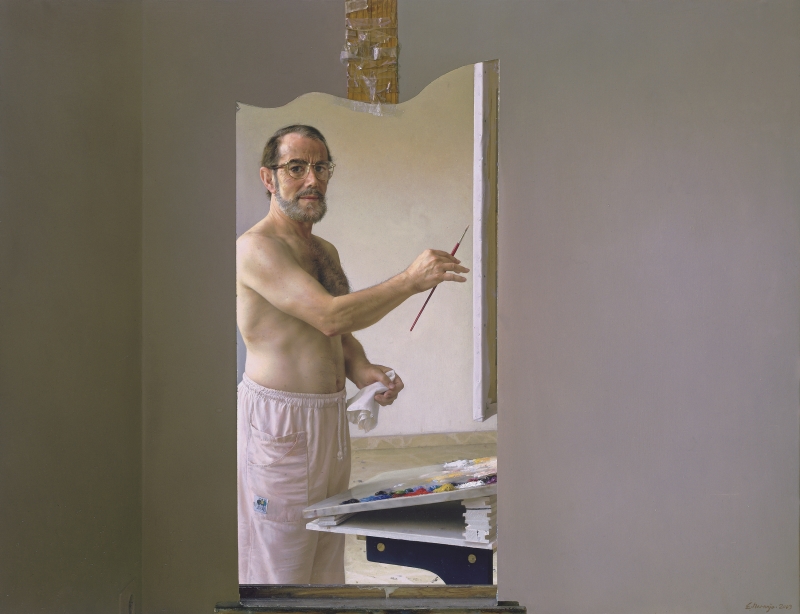Biography
Eduardo Naranjo (Monesterio-Badajoz, 1944) well deserves to be considered today's most outstanding ambassador of magic oneiric Realism. Always faithful to poetic truth and beauty, in 1979, after his resounding show at the Biosca Gallery, important figures of the cultural world voted Naranjo "Best Artist of the Year in the Spanish Art magazine B and N" and, in 1993, his Retrospective Exhibition in Madrid's Centro Cultural de la Villa (Plaza de Colón) was visited by nearly two hundred and fifty thousand people of varying nationalities.
In 1981, his contribution to the artistic edition of the 1978 Spanish Constitution signified a return to engraving which, since then, he has continued to alternate with painting. Although it is difficult to single out any one work, given Eduardo's prodigious output in this branch of the arts, perhaps the most ambitious and impressive are the seven engravings which compile his Genesis (1983-85) and the thirteen inspired by Lorca's Poet in New York , two major works now well-known in many corners of the world.
Never to be harnessed to one metier, Naranjo has also collaborated in various theatrical productions in Madrid: at the Teatro Español with José Carlos Plaza directing Lorca's Bernarda Alba's House and at the Bellas Artes Theatre with Manuel Collado wisely directing Jorge Marquez, Make me a Night-time Tale.
Although untainted by modern trends and producing very few private shows throughout his career, Eduardo Naranjo has participated in innumerable collective exhibitions together with other great contemporaries. He is still one of the most prestigious and sought-after artists of our time often setting precedent and always committed. This has been so since his early realist shows at the Loring Gallery (Madrid, 1971 and 1972), at the above-mentioned Biosca Gallery (1979), his anthological 1980 show at the Punto Gallery (Valencia) which later travelled to Cáceres and Badajoz, and the 1993 Centro Cultural de la Villa (Madrid) exhibition which also was taken to Cáceres and Badajoz. More recently, Eduardo has had shows in the Leandro Navarro (Madrid, 1999), in various cities of the province of Galicia (2000 and 2002), in the Salas de Caja Sur of Córdoba, in Sevilla at the San Hermenegildo Church and at the Museum of Bellas Artes in Badajoz. Much has been written about Eduardo Naranjo both in prose and in verse; the bibliography surrounding his work is not only amply substantial, as has been the range of lectures given, but extends to quite a few languages, including publications dedicated to him in China and Taiwan. This is not at all surprising given the powerful emotive force which emanates from all that his soul and hands create: his best value






